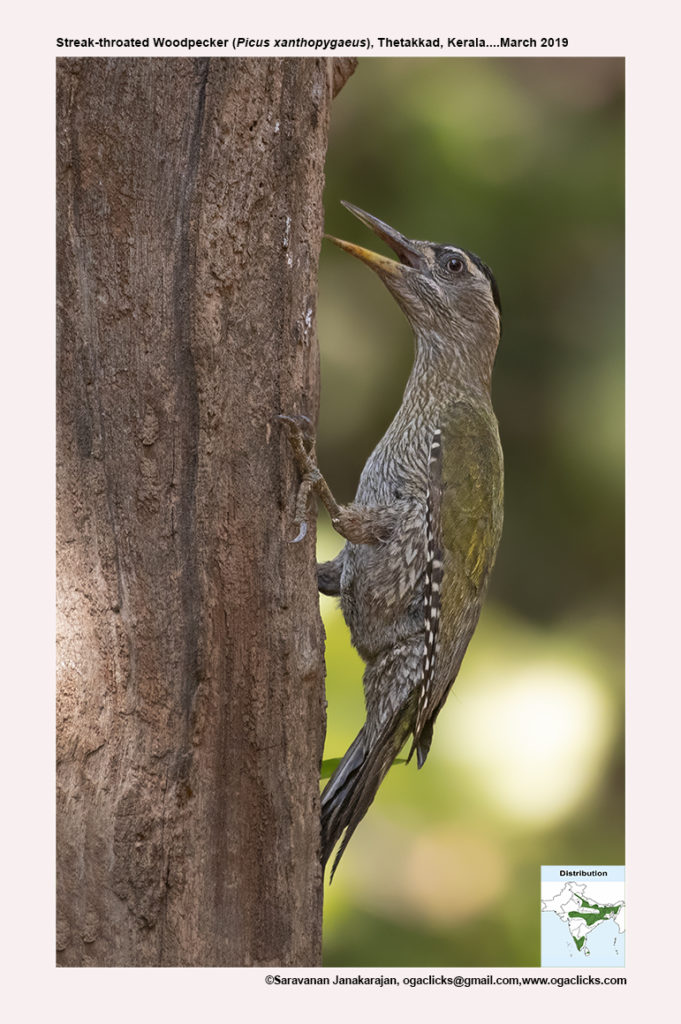Streak-throated Woodpecker

Streak-throated Woodpecker Picus xanthopygaeus
Etymology:
- Picus : Latin word for Woodpecker; Greek Mythology Picus, king of Latium, who married the beautiful nymph and songstress Canens and was changed into a woodpecker by the spiteful Circe, whose affections he had spurned.
- Xanthopygaeus : Greek word xanthos-yellow; –pugios –rumped
Vernacular Names: Guj: Lilo lakkad khod, Aravali lilo lakkad khod, Hindi: Kaudiyala Kathfoda, Mar: Reshal Kanthahca Sutar
Distribution in India: Widespread resident of Central, Gangetic planes and Peninsular India.
Description: Size of 30 cm; 83–111 g. The male has red forehead to hindcrown and crest with variable amount of black at borders, thin white supercilium, greyish ear-coverts streaked brownish, narrow white cheek stripe, blackish malar stripe greatly obscured by pale whitish tips and edges. The chin and throat are whitish with variable fine dark brown or olive streaks; hindneck and upperparts are yellowish-green, rump and most of uppertail-coverts are bright yellow; dark green wing-coverts and tertials, tertials sometimes with few white bars at base. The flight feathers are brownish-black, outer webs of secondaries are dark green, white bars on inner webs of secondaries and both webs of primaries. The uppertail is blackish, narrowly barred brown; whitish to pale buff-white below, tinged green on breast, feathers with broad olive edges and tips and occasionally shaft streaks, forming distinct scaly pattern, sometimes more diffuse on lower belly. It has a whitish undertail-coverts with dark arrowheads; underwing is brownish, coverts are paler, all barred white; undertail is dark brown, washed dull yellow, variable dull yellow-brown bars; longish bill that is broad-based, slightly chisel-tipped, slightly curved culmen, dark brown or grey-brown, dull yellow base of lower mandible. The iris is white or pale pinkish, darker outer area; legs are grey-green. The female has forehead to nape black with greyish streaking. The juvenile is less yellow-tinged above, grey feather bases creating more variegated appearance, less scaly-looking below; Juvenile male has less red on head than adult.
Habitat: It is found in open deciduous forest, dry dipterocarp forest, also semi-evergreen, sal and mixed bamboo forests; occurs also in secondary growth, sparsely wooded park-like country, teak and particularly rubber plantations, and tea estates. It is found from lowlands to 1700m.
Food Habits: It eats ants, termites and other small insect larvae. Flower nectar and seeds also eaten. It forages frequently on ground, and may climb over boulders.
Breeding Habits: They breed in Jan–May in India, Apr–Sept in Sri Lanka and Mar–May in SE Asia. The nest-hole is excavated by both sexes, in tree trunk or large branch. They lay a clutch of 3–5 eggs. Both the parents feed the chicks.